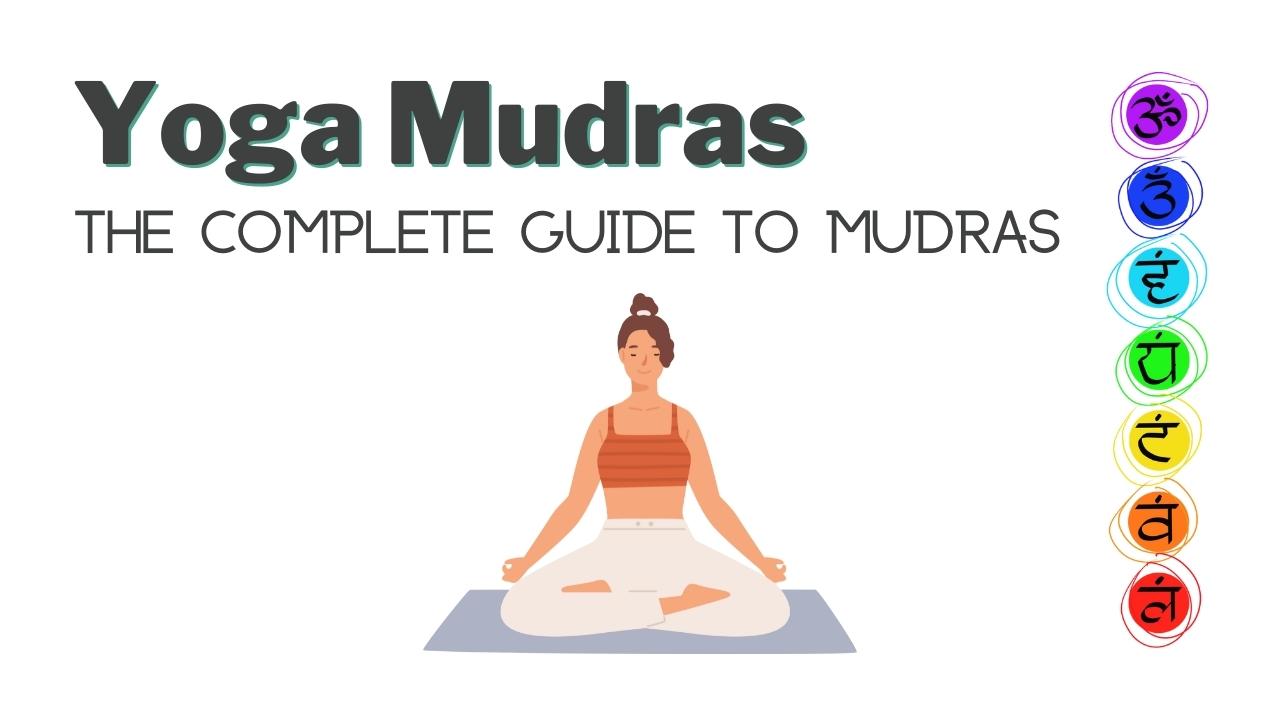Did you know that over 36 million people in the USA practice yoga routinely? And did you also know that until 1937, Yoga classes were offered to men only? It’s an indisputable fact that Yoga is versatile, relaxing, and therapeutic. This 5,000-year-old practice has, over the years, grown in popularity due to the unmatchable health benefits it confers to those who practice it. Given its therapeutic importance, it’s only fitting that one gets an insight into one of the most effective Yoga asanas, the Yoga mudras.
So, whether you are a first-timer or a veteran Yogi (male who practices Yoga) or Yogini (female who practices Yoga), you can’t help but ask, ‘How many Yoga mudras are there? How do Yoga mudras work? How long do Yoga mudras take to work? And what are Yoga mudras capable of healing? Then read on as I got you covered with 100% factual answers to all of the above questions.
Table of Contents
- How many Yoga Mudras are there?
- How do Yoga Mudras work?
- How long do Yoga Mudras work?
- What are Yoga Mudras capable of Healing?
- Anjali Mudra
- Summary
How many Yoga Mudras are there?
Yoga is an ancient practice that has been used for centuries to promote physical and mental well-being. One key component of Yoga is the use of mudras, which are hand gestures that help to focus energy and direct the flow of prana, or life force. These mudras help to direct the flow of energy within the body and can be used to achieve a variety of different effects. There are said to be over 100 different Yoga mudras, each with its own unique purpose.
However, the exact number of mudras is a matter of some debate. Some sources claim that there are only seven significant mudras, while others say there are dozens. Still, others believe that there is no definitive number and that new mudras can be created as needed to suit the practitioner’s needs. Ultimately, the number of Yoga mudras is less important than their effectiveness in promoting health and well-being.
There are also five different types of Yoga mudra categories. These mudras are named according to the part of the body one uses to express or practice them. These Yoga mudras include:
- Hasta (hand) mudras. These are the most widely performed type of mudras.
- Mana (head) mudras. These mudras are an essential part of Kundalini Yoga. Mana mudras are most often performed during a meditation Yoga asana.
- Kaya (postural) mudras. These yogic mudras are a combination of different physical postures accompanied by concentration and different breathing techniques.
- Bandha (heart) mudras. These mudras are performed during pranayama.
- Adhara (perineal) mudras. A Yogi or Yogini use their pelvic floor to practice this yogic asana.
How do Yoga Mudras work?
Yoga mudras work by stimulating different parts of your body to balance the elements represented by the particular finger you use during this yogic asana.
Each finger in your hand represents a particular element. The thumb represents fire, the forefinger or index finger represents wind, the middle finger represents ether, the little finger represents water, and the ring finger represents earth.
How long do Yoga Mudras work?
Yoga mudras may work immediately or take approximately 1 hour or less to produce the desired effect. The Yoga mudra technique directly determines the time taken for a Yoga mudra to work.
What are Yoga Mudras capable of Healing?
Below is a list of some of the most beneficial Yoga mudras that one can perform and the ailments they are capable of healing:
Prana Mudra
This is the mudra of life since it balances your body’s life element. It can be performed at any time of the day. This mudra activates the energy in your body. To fully benefit from this mudra, it’s vital that you perform it along with padmasana. This mudra has the ability to relieve lethargy, and fatigue, improve one’s visual acuity and boost one’s immune system.
How to do it:
- Relax your wrists
- Gently bend your thumb, your ring finger, and your little finger
- Place your ring and little fingers’ tips on your thumb
- Keep your middle and index finger straightened
- Keeping your fingers in this position, place your hands on your knees with the palms facing up
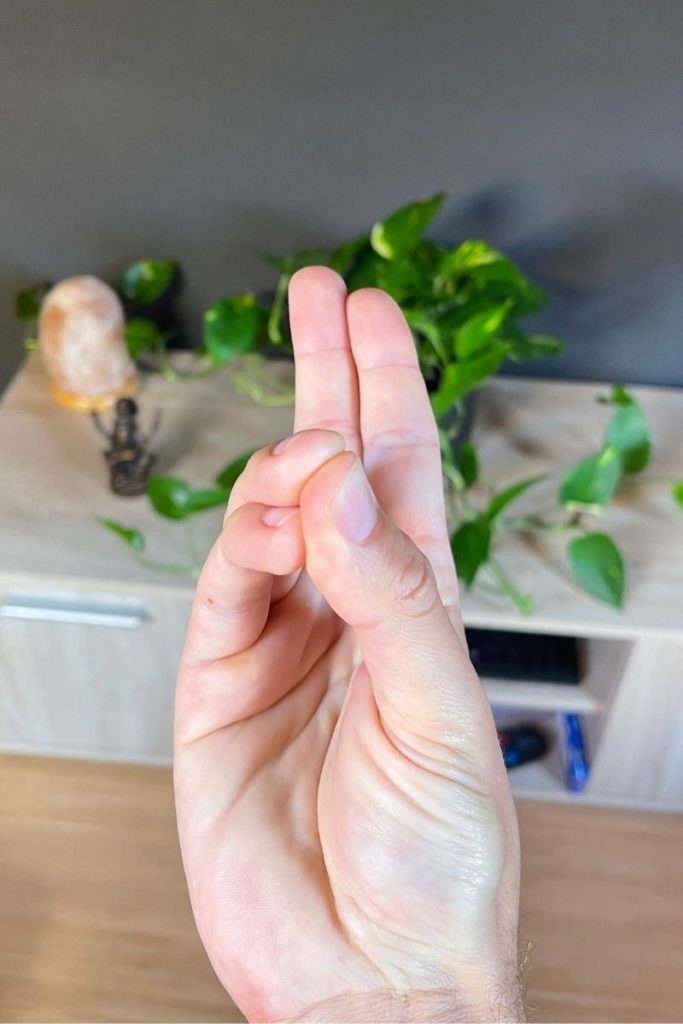
Vayu Mudra
This is the air mudra. It works to balance the air element in your body. This mudra can be performed on a full stomach and at any time of the day while sitting, standing, or supine (laying on the back).
It aids in the expulsion of excessive air from one’s chest, stomach, and entire body, thus providing one with relief from rheumatic and chest pains. This mudra can also prevent and reduce neck and lower back pain and alleviate pain associated with gout and sciatica (nerve pain that arises from injury or irritation to the sciatic nerve). Note; This mudra shouldn’t be over-practiced. Overdoing it may cause you an imbalance within your body.
How to do it:
- Start by folding your index finger in half (upon folding your finger two bones, known as phalanx bones, will be visible)
- Use your thumb to press down the 2nd bone of your index finger
- Fully extend (straighten) the three remaining fingers
- While maintaining your fingers position, place your hands on your knees with the palms facing up
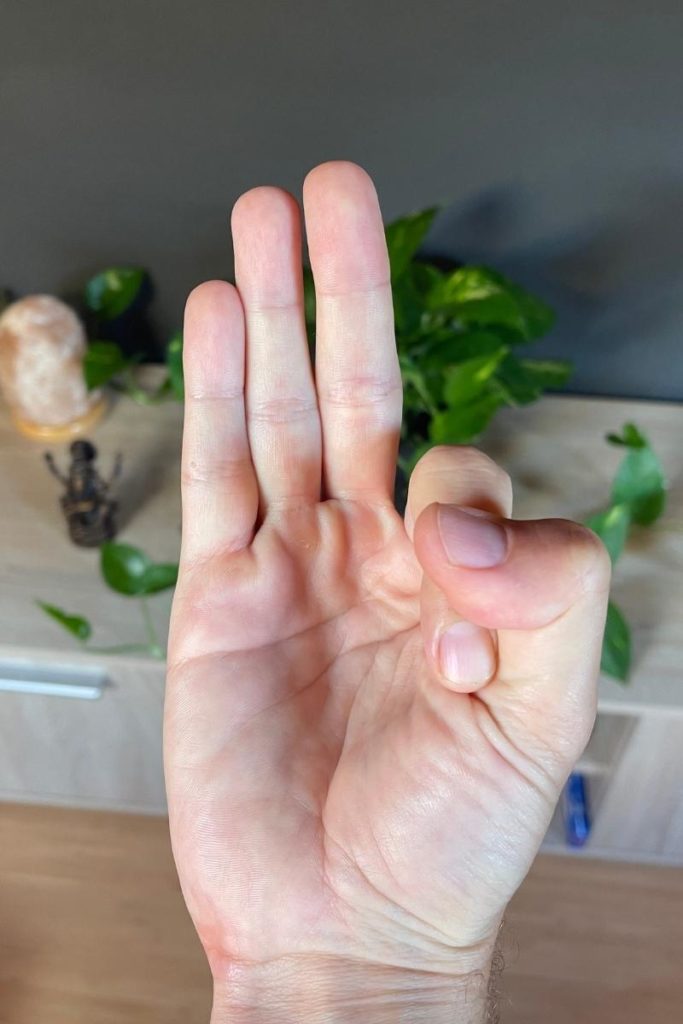
Varun Mudra
This mudra is also known as the water mudra since it helps balance the water element in one’s body. This is the best yogic asana for people looking to achieve outer beauty through Yoga. This Yoga mudra which can be performed at any time of the day in any position other than sitting cross-legged, enhances your body’s fluid circulation, thus keeping your skin sufficiently hydrated.
This, in turn, helps keep your skin healthy by preventing acne development and deterring skin illness and infections from establishing on your skin. This yogic technique is also known to help alleviate muscle pains.
How to do it:
- With the tips of your thumbs, lightly touch the tips of your little fingers
- Fully extend the rest of your fingers
- With your palms facing up, place your hands on your knees
When performing this mudra, please avoid pressing the tip of your little finger against or near your nail. Doing so predisposes you to get dehydrated.
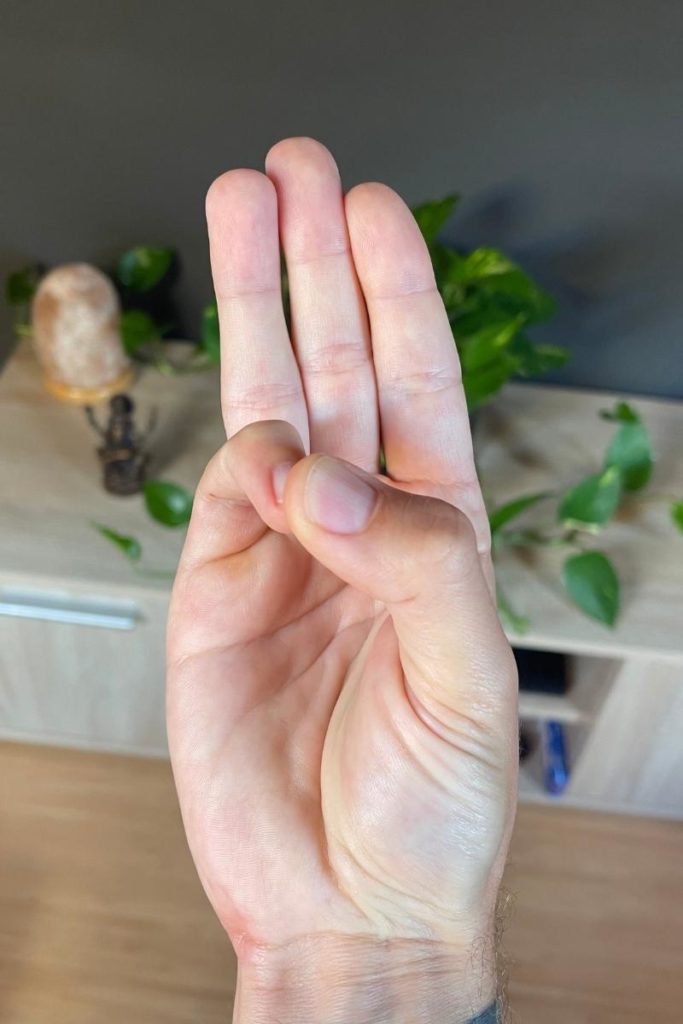
Shunya Mudra
This is the mudra of sky or emptiness. It is also known as the paradise mudra. Routinely performing this yogic asana may help you achieve gratifying peace. By properly performing this technique, one may benefit from reduced ear pains or earaches. This mudra is also known to aid in the management and treatment of vertigo (having a sensation of feeling off balance) and motion sickness.
How to do it:
- Bend your middle finger
- Using your thumb press, the first phalanx of your middle finger
- Keep the other three fingers extended
- Place your hands on your knees with your palms facing up
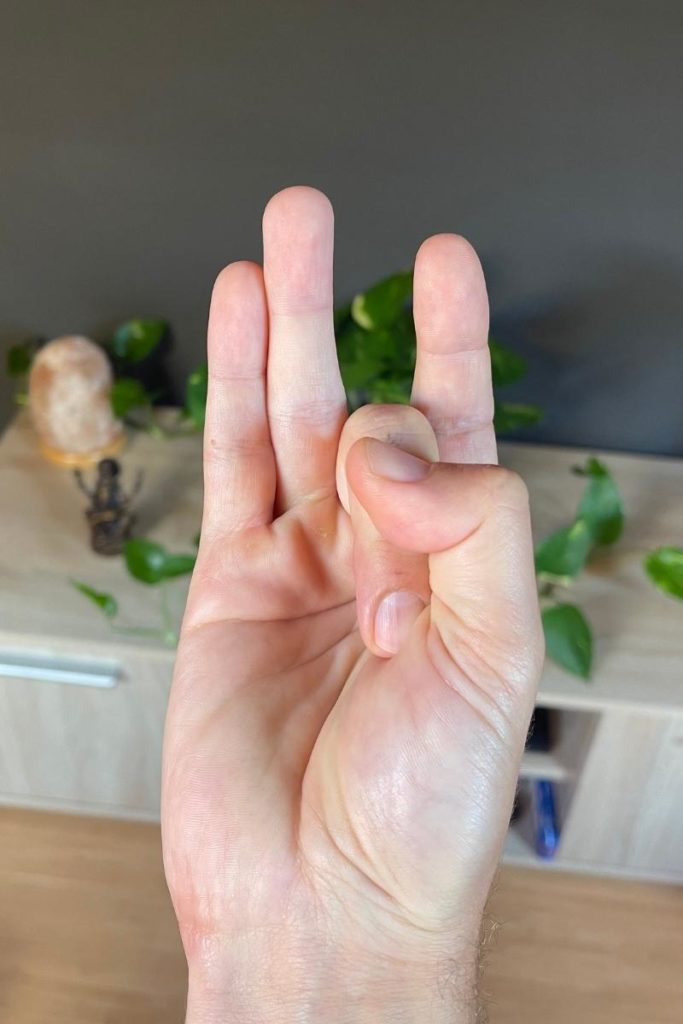
Anjali Mudra
Anjali Mudra is a Yoga gesture that involves pressing the palms together in front of the heart center. The word Anjali means “offering,” and mudra means “seal.” This mudra represents the union of our individual consciousness with the Divine.
It is a gesture of reverence and honor, and it can be used as a way to connect with the sacred energy within ourselves and all around us. The act of pressing the palms together creates a powerful energy field that can help to purify and heal the body, mind, and spirit. When we practice Anjali Mudra, we open ourselves up to receive blessings from the Universe. We are reminded that we are all connected and that we are all part of the same Divine tapestry.
Anjali mudra is a simple yet powerful gesture that has a host of benefits. For starters, it helps to improve circulation and promote joint health. It also helps to increase flexibility and boost the immune system. Additionally, the Anjali Mudra is said to help relieve stress and tension. So if you’re looking for a way to boost your health and well-being, Anjali mudra is a great mudra to practice!
Anjali mudra is also the mudra that is being used while greeting someone with “Namaste.”
How to do it:
- Put your hands together in a prayer-like position in front of your heart.
- Leave a little space between your palms.
- Bend the knuckles at the base of the fingers slightly.

Summary
Practicing the Shunya mudra, Varun mudra, Prana mudra, Anjali mudra, and Vayu mudra at least 2 to 3 times a day for 15-20 minutes may help you prevent and cure the following ailments; Skin diseases, rheumatic, chest, neck, and lower back pains, earaches, motion sickness, and vertigo.
To achieve the maximal benefits of Yoga mudras, it’s vital that you learn the correct techniques to perform each mudra. It’s also crucial that you practice your mudras in a clean, calm, and quiet place. Yoga mudras may work immediately or take an hour or less to produce the desired therapeutic effects.
If you want to learn more about Yoga Poses, feel free to check out our Yoga Poses Category!
